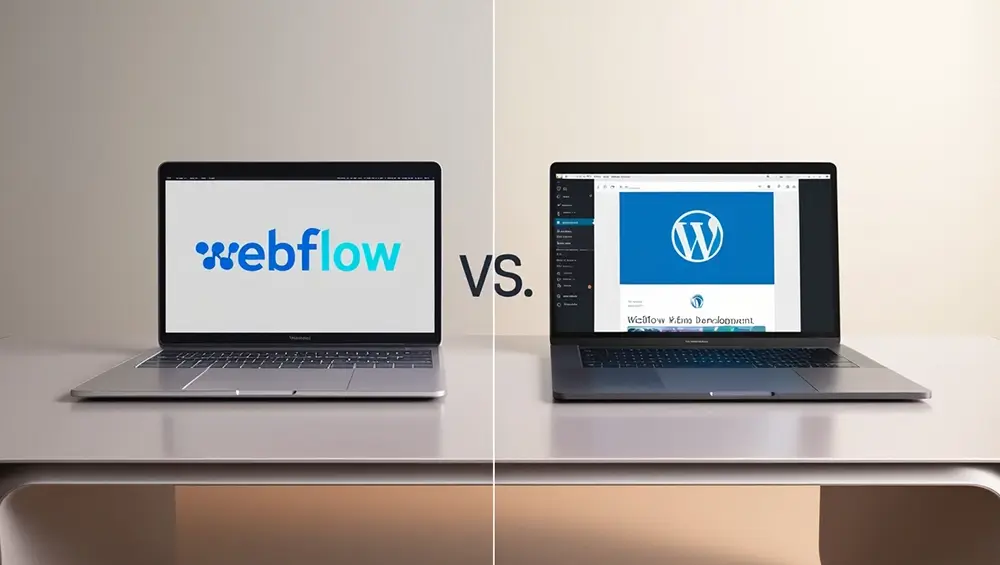
Choosing the right website-building platform is crucial for your online success. Webflow and WordPress are two of the most popular website development tools, each offering unique features and advantages. But which one is best for you? This article compares Webflow and WordPress based on functionality, ease of use, design flexibility, pricing, SEO, and more.
Overview of Webflow and WordPress
Webflow
Webflow is a modern website builder that combines the flexibility of coding with the convenience of a visual editor. It allows users to create professional, responsive websites without extensive coding knowledge.
WordPress
WordPress is the world’s most widely used content management system (CMS), powering over 40% of websites. It offers extensive customization, thousands of plugins, and a robust ecosystem for website development.
Key Differences Between Webflow and WordPress
1. Ease of Use
Webflow:
Uses a drag-and-drop interface with real-time visual editing, making it intuitive for designers and developers.
WordPress:
Requires some technical knowledge to set up and manage, but the Gutenberg block editor has simplified content creation.
2. Design & Customization
Webflow:
Offers full design control with a built-in CSS and HTML editor, making it ideal for designers who want pixel-perfect customization.
WordPress:
Provides customizable themes and page builders like Elementor and WPBakery, but requires additional plugins for advanced customization.
3. Hosting & Performance
Webflow:
Comes with built-in hosting on AWS, ensuring optimized performance and security.
WordPress:
Requires third-party hosting, which can impact speed and performance depending on the provider.
4. SEO Capabilities
Webflow:
Provides built-in SEO tools, including clean code structure, automatic sitemaps, and customizable meta tags.
WordPress:
Offers powerful SEO plugins like Yoast SEO and Rank Math, allowing advanced optimization strategies.
5. E-commerce Features
Webflow:
Has an integrated e-commerce platform with flexible customization but may lack the extensive plugin ecosystem of WordPress.
WordPress:
Supports WooCommerce, the most popular e-commerce plugin, with a vast range of features and add-ons.
6. Cost & Pricing
Webflow:
Operates on a subscription-based model, with pricing based on site plans and additional features.
WordPress:
Open-source and free to use, but requires separate costs for hosting, themes, plugins, and maintenance.
7. Learning Curve
Webflow:
Requires a learning curve, especially for beginners unfamiliar with web development.
WordPress:
Easier for non-technical users due to its vast online resources and community support.
Which One Should You Choose?
- Choose Webflow if:
- You prefer a no-code/low-code solution with powerful design capabilities.
- You want an all-in-one platform with built-in hosting and security.
- You’re a designer or agency looking for pixel-perfect control.
- Choose WordPress if:
- You need a flexible and scalable platform with thousands of plugins.
- You’re running a content-heavy website like a blog or news portal.
- You prefer full ownership and control over your site’s hosting.
Final Thoughts
Both Webflow and WordPress offer unique benefits, and the right choice depends on your specific needs. If you prioritize design control and simplicity, Webflow is an excellent option. However, if you need flexibility, scalability, and a vast plugin ecosystem, WordPress is the better choice.
No matter which platform you choose, ensure it aligns with your long-term goals and business requirements. Need help deciding? Let us know in the comments!

